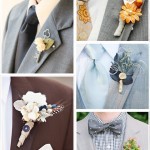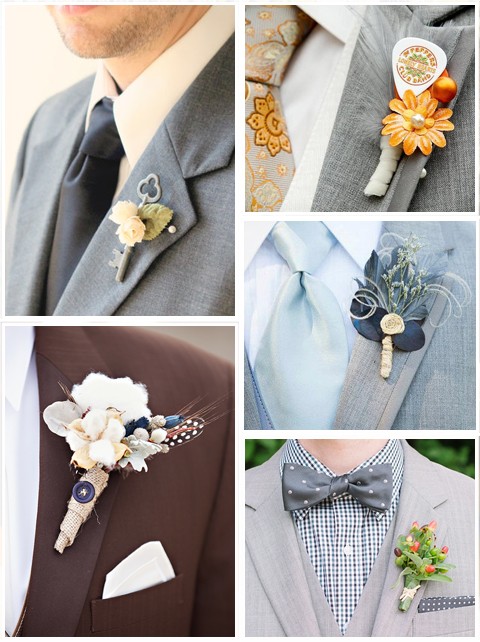 Historically Boutonnieres were worn at formal occasions acting as perfume for the wearers. The term ’boutonniere’ is derived from the French language. It means a flower worn in a buttonhole. Proper placement of the boutonniere is the left side of the lapel. It can be worn on a vest not on a shirt alone. For pocketed shirts often times a ‘card’ wrapped with ribbon with flowers along the pocket line are a fun and interesting look. Magnetic is also a nice way to attach to vests and shirt pockets. Non traditional boutonnieres may consist of metallica jeweled wires, unique greenery with feathers, fishing lures or personal items added into the flowers. You want the boutonniere to make a statement without going too small and not too big.
Historically Boutonnieres were worn at formal occasions acting as perfume for the wearers. The term ’boutonniere’ is derived from the French language. It means a flower worn in a buttonhole. Proper placement of the boutonniere is the left side of the lapel. It can be worn on a vest not on a shirt alone. For pocketed shirts often times a ‘card’ wrapped with ribbon with flowers along the pocket line are a fun and interesting look. Magnetic is also a nice way to attach to vests and shirt pockets. Non traditional boutonnieres may consist of metallica jeweled wires, unique greenery with feathers, fishing lures or personal items added into the flowers. You want the boutonniere to make a statement without going too small and not too big.
The boutonniere for the Groom should compliment the Bride’s bouquet and the Groomsmen should compliment the Groom. Try to stay away from Hydrangeas, Dahlias and tulips as they may not last all day. The classic rose and sophisticated mini calla lilies are sure winners. Groom, Groomsmen, Ring-bearers, Fathers, Stepfathers, and Grandfathers of both the Bride and the Grooms side typically wear them. Ushers if in a suit or tux. Ring-bearers 4 years or younger are good with safety pins. To pin use 2 pins if possible start form behind keeping the pin out of site. Both pins should be directed into the top of the bout stem without allowing the pind pont to exit the boutonniere. The boutonniere remains on the the most important part of the man’s attire for his special day. Wear it with confidence and elegance and the heads turn!


